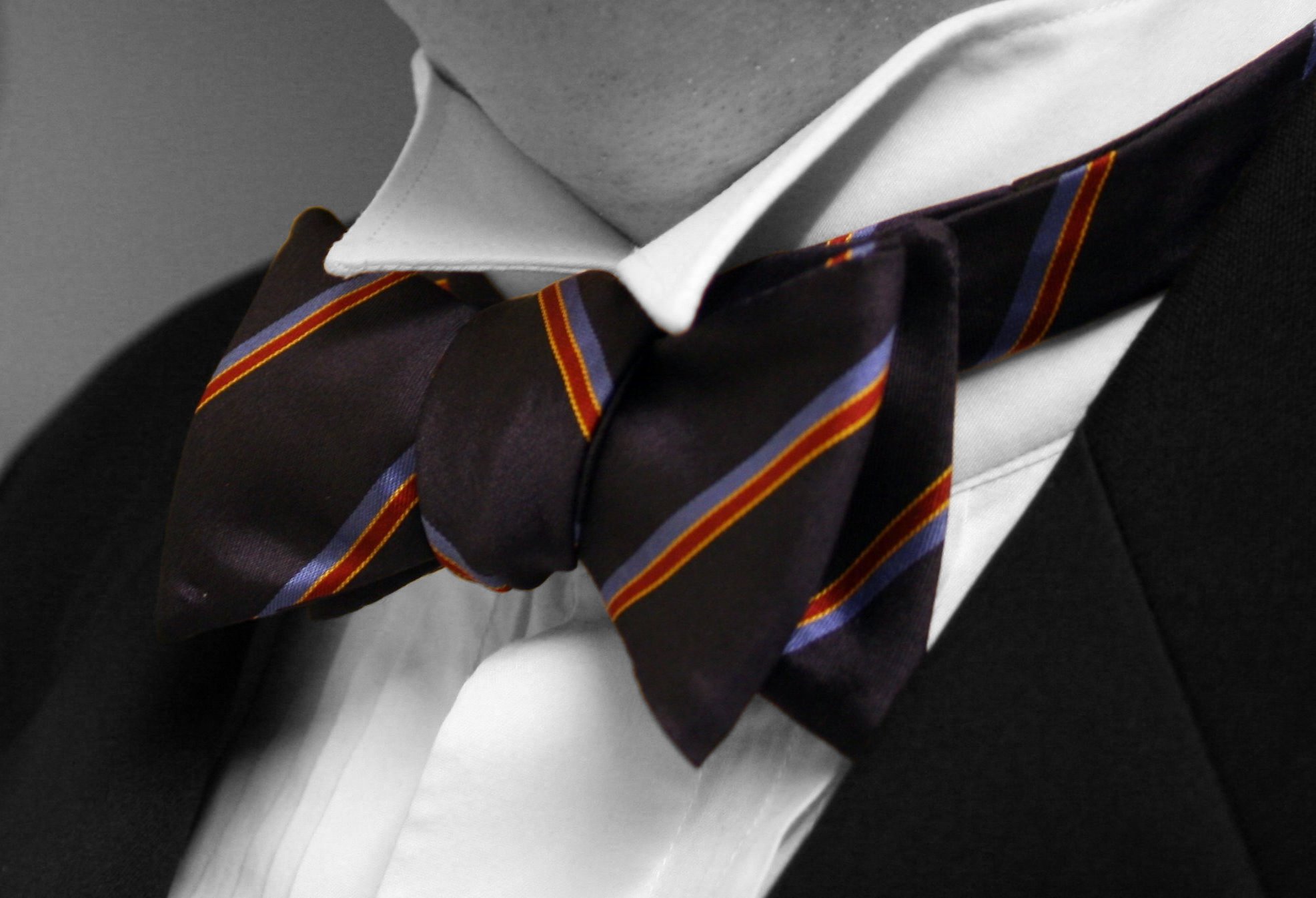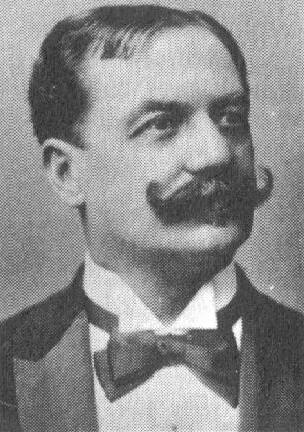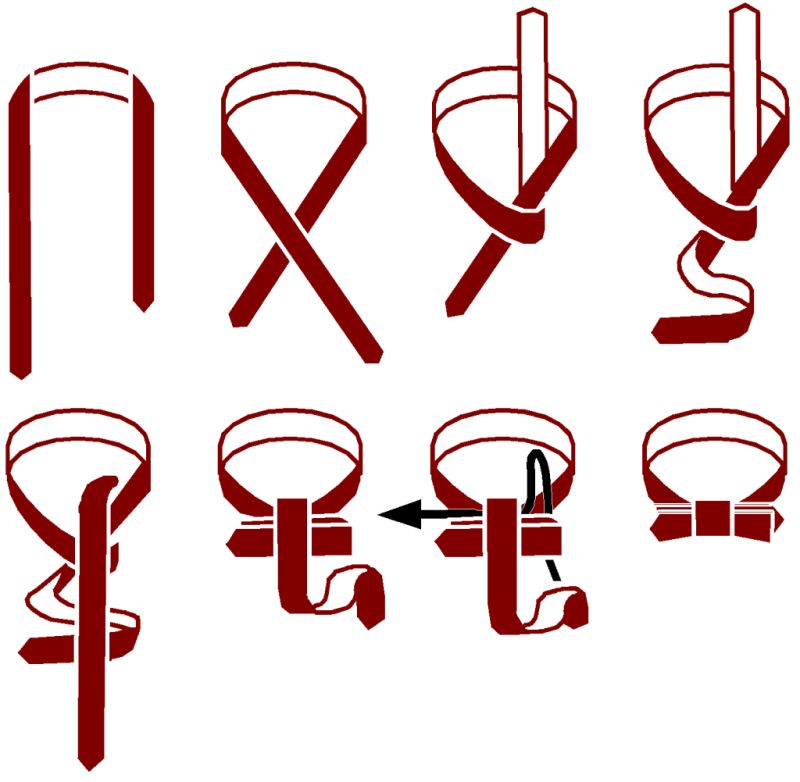Bow-ties on:
[Wikipedia]
[Google]
[Amazon]
 The bow tie or dicky bow is a type of
The bow tie or dicky bow is a type of
 The
The
 Popular perception tends to associate bow tie wearers with particular
Popular perception tends to associate bow tie wearers with particular
File:2 Silk Bow Ties.JPG, Silk bow ties. Fixed length with "thistle" ends (left) and adjustable with "bat wing" ends (right).
File:Yellow self tie cotton bow tie, designed and made in the UK.jpg, Bright Yellow patterned self-tie bow tie, made of
 The bow tie or dicky bow is a type of
The bow tie or dicky bow is a type of neckwear
Neckwear is a category of clothing that is worn around or on the neck. Neckwear can be Utilitarian design, utilitarian in nature, usually to protect the neck from colder temperatures, or can be worn as a "fashion statement." Neckwear is distinguish ...
, distinguishable from a necktie
A necktie, long tie, or simply a tie, is a cloth article of formal neckwear or office attire worn for decorative or symbolic purposes, resting under a folded shirt collar or knotted at the throat, and usually draped down the chest. On rare o ...
because it does not drape down the shirt placket, but is tied just underneath a winged collar. A modern bow tie is tied using a common shoelace knot
The shoelace knot, or bow knot, is commonly used for tying shoelaces and bow ties.
The shoelace knot is a doubly slipped reef knot formed by joining the ends of whatever is being tied with a half hitch, folding each of the exposed ends into a ...
, which is also called the bow knot for that reason. It consists of a ribbon
A ribbon or riband is a thin band of material, typically cloth but also plastic or sometimes metal, used primarily as decorative binding and tying. Cloth ribbons are made of natural materials such as silk, cotton, and jute and of synthetic mate ...
of fabric tied around the collar
Collar may refer to:
Human neckwear
*Clerical collar (informally ''dog collar''), a distinctive collar used by the clergy of some Christian religious denominations
*Collar (clothing), the part of a garment that fastens around or frames the neck
...
of a shirt in a symmetrical
Symmetry () in everyday life refers to a sense of harmonious and beautiful proportion and balance. In mathematics, the term has a more precise definition and is usually used to refer to an object that is invariant under some transformations ...
manner so that the two opposite ends form loops.
There are generally three types of bow ties: the pre-tied, the clip-on, and the self-tie. Pre-tied bow ties are ties in which the distinctive bow is sewn onto a band that goes around the neck and clips to secure. Some "clip-ons" dispense with the band altogether, instead clipping straight to the collar. The traditional bow tie, consisting of a strip of cloth that the wearer has to tie by hand, is also known as a "self-tie", "tie-it-yourself", or "freestyle" bow tie.
Bow ties may be made of any fabric material, but most are made from silk
Silk is a natural fiber, natural protein fiber, some forms of which can be weaving, woven into textiles. The protein fiber of silk is composed mainly of fibroin and is most commonly produced by certain insect larvae to form cocoon (silk), c ...
, polyester
Polyester is a category of polymers that contain one or two ester linkages in every repeat unit of their main chain. As a specific material, it most commonly refers to a type called polyethylene terephthalate (PET). Polyesters include some natura ...
, cotton
Cotton (), first recorded in ancient India, is a soft, fluffy staple fiber that grows in a boll, or protective case, around the seeds of the cotton plants of the genus '' Gossypium'' in the mallow family Malvaceae. The fiber is almost pure ...
, or a mixture of fabrics. Some fabrics (e.g., wool
Wool is the textile fiber obtained from sheep and other mammals, especially goats, rabbits, and camelids. The term may also refer to inorganic materials, such as mineral wool and glass wool, that have some properties similar to animal w ...
or velvet) are much less common for bow ties than for ordinary four-in-hand
The four-in-hand knot is a method of tying a necktie. Also sometimes known (in UK) as a Bucket Knot, due to the shape of the finished knot. Some reports state that carriage drivers tied their reins with a four-in-hand knot, while others claim th ...
neckties.
Origin and history
The bow tie originated amongCroatia
Croatia, officially the Republic of Croatia, is a country in Central Europe, Central and Southeast Europe, on the coast of the Adriatic Sea. It borders Slovenia to the northwest, Hungary to the northeast, Serbia to the east, Bosnia and Herze ...
n mercenaries
A mercenary is a private individual who joins an War, armed conflict for personal profit, is otherwise an outsider to the conflict, and is not a member of any other official military. Mercenaries fight for money or other forms of payment rath ...
during the Thirty Years' War
The Thirty Years' War, fought primarily in Central Europe between 1618 and 1648, was one of the most destructive conflicts in History of Europe, European history. An estimated 4.5 to 8 million soldiers and civilians died from battle, famine ...
of the 17th century: the Croat mercenaries used a scarf
A scarf (: scarves or scarfs) is a long piece of fabric that is worn on or around the neck, shoulders, or head. A scarf is used for warmth, sun protection, cleanliness, fashion, religious reasons, or to show support for a sports club or team. ...
around the neck to hold together the opening of their shirts. This was soon adopted (under the name ''cravat Cravat, cravate or cravats may refer to:
* Cravat (early), forerunner neckband of the modern necktie
* Cravat, British name for what in American English is called an ascot tie
* Cravat bandage, a triangular bandage
* Cravat (horse) (1935–1954) ...
'', derived from the French
French may refer to:
* Something of, from, or related to France
** French language, which originated in France
** French people, a nation and ethnic group
** French cuisine, cooking traditions and practices
Arts and media
* The French (band), ...
for "Croat
The Croats (; , ) are a South Slavs, South Slavic ethnic group native to Croatia, Bosnia and Herzegovina and other neighboring countries in Central Europe, Central and Southeastern Europe who share a common Croatian Cultural heritage, ancest ...
") by the upper classes in France, then a leader in fashion
Fashion is a term used interchangeably to describe the creation of clothing, footwear, Fashion accessory, accessories, cosmetics, and jewellery of different cultural aesthetics and their mix and match into Clothing, outfits that depict distinct ...
, and flourished in the 18th and 19th centuries. It is uncertain whether the cravat then evolved into the bow tie and four-in-hand
The four-in-hand knot is a method of tying a necktie. Also sometimes known (in UK) as a Bucket Knot, due to the shape of the finished knot. Some reports state that carriage drivers tied their reins with a four-in-hand knot, while others claim th ...
necktie
A necktie, long tie, or simply a tie, is a cloth article of formal neckwear or office attire worn for decorative or symbolic purposes, resting under a folded shirt collar or knotted at the throat, and usually draped down the chest. On rare o ...
, or whether the cravat gave rise to the bow tie, which in turn led to the four-in-hand necktie.
The most traditional bow ties are usually of a fixed length and are made for a specific size neck. Sizes can vary between approximately and as with a comparable shirt collar. Fixed-length bow ties are preferred when worn with the most formal wing-collar shirts, so as not to expose the buckle or clasp of an adjustable bow tie. Adjustable bow ties are the standard when the tie is to be worn with a less formal, lie-down collar shirt that obscures the neckband of the tie. "One-size-fits-all" adjustable bow ties are a later invention that helps to moderate production costs.
 The
The lavallière
A lavallière, also called a pussycat bow or pussybow, is a style of neckwear worn with women's and girls' blouses and bodices. It is a bow tied at the neck, which has been likened to those sometimes put on "pussy cats".
History
While bows at th ...
is a type of cravat similar to the bow tie that was popularly worn in the 19th century in France. It is of a similar fashion to the bow tie but has a larger knot and drooping ends.
Wearers
 Popular perception tends to associate bow tie wearers with particular
Popular perception tends to associate bow tie wearers with particular profession
A profession is a field of Work (human activity), work that has been successfully professionalized. It can be defined as a disciplined group of individuals, professionals, who adhere to ethical standards and who hold themselves out as, and are ...
s, such as architects, debt collectors, attorneys, university professors, teachers, waiters, and politicians. Pediatricians
Pediatrics (American English) also spelled paediatrics (British English), is the branch of medicine that involves the medical care of infants, children, adolescents, and young adults. In the United Kingdom, pediatrics covers many of their yout ...
frequently wear bow ties, for infants cannot grab them the way they could grab a four-in-hand
The four-in-hand knot is a method of tying a necktie. Also sometimes known (in UK) as a Bucket Knot, due to the shape of the finished knot. Some reports state that carriage drivers tied their reins with a four-in-hand knot, while others claim th ...
necktie. Bow ties do not readily droop into places where they would get soiled or where they could, whether accidentally or deliberately, strangle the wearer. Clowns sometimes use an oversized bow tie for comic effect. Classical musicians traditionally perform in white tie
White tie, also called full evening dress or a dress suit, is the most formal evening Western dress code. For men, it consists of a black tail coat (alternatively referred to as a dress coat, usually by tailors) worn over a white dress shir ...
or black tie
Black tie is a semi-formal Western dress code for evening events, originating in British and North American conventions for attire in the 19th century. In British English, the dress code is often referred to synecdochically by its principal ...
ensembles, of which both designs are bow ties. Bow ties are also associated with weddings
A wedding is a ceremony in which two people are united in marriage. Wedding traditions and customs vary greatly between cultures, ethnicities, races, religions, denominations, countries, social classes, and sexual orientations. Most weddi ...
, mainly because of their almost universal inclusion in traditional formal evening-wear.
Bow ties, or slight variations thereof, have also made their way into women's wear, especially business attire. The 1980s saw professional women, especially in law, banking, and the corporate world, donning very conservative tailored suits, with a rise of almost 6 million units in sales. These were often worn with buttoned-up blouses, some with pleats up the front like tuxedo shirts, and accessorized with bow ties that were slightly fuller than the standard bow ties worn by their male counterparts, but typically consisting of the same fabrics, colors, and patterns as men's ties.
Russell Smith, style columnist for Toronto's ''The Globe and Mail
''The Globe and Mail'' is a Newspapers in Canada, Canadian newspaper printed in five cities in Western Canada, western and central Canada. With a weekly readership of more than 6 million in 2024, it is Canada's most widely read newspaper on week ...
'', records mixed opinions of bow tie wearers. He observed that bow ties were experiencing a potential comeback among men, though "the class conscious man recoils at the idea" of pre-tied bow ties and " ft-wingers ... recoil at what they perceive to be a symbol of political conservatism." He argues that anachronism is the point, and that bow tie wearers are making a public statement of their disdain for changing fashion. Such people may not be economic conservatives, he argues, but they ''are'' social conservatives. In Smith's view, the bow tie is "the embodiment of propriety", an indicator of fastidiousness, and "an instant sign of nerddom in Hollywood
Hollywood usually refers to:
* Hollywood, Los Angeles, a neighborhood in California
* Hollywood, a metonym for the cinema of the United States
Hollywood may also refer to:
Places United States
* Hollywood District (disambiguation)
* Hollywood ...
movies", but "not the mark of a ladies' man" and "not exactly sexy". He attributes the building of this image to the association of the bow tie with newspaper editors (because of their fastidiousness with words), high-school principals, and bachelor English teachers. Most men, he observes, only wear bow ties with formal dress.
Types
Self-tie
There are usually two shapes of self-the bow ties available: the "bat wing", which is parallel-sided like acricket bat
A cricket bat is a specialised piece of equipment used by batters in the sport of cricket to hit the ball, typically consisting of a cane handle attached to a flat-fronted willow-wood blade. It may also be used by a batter who is making batte ...
, and the "thistle", also known as the "butterfly". An example of each can also be seen below. Which is worn is a matter of personal preference. Some other shapes do exist; for instance, the Diamond Point, with pointed tips at both ends. This is a double-ended type, with both ends shaped, though occasionally, ties are tied in the single-ended type, in which only one end flares out to give the batwing or thistle shape, and the other remains thin. To tie one of these requires careful consideration, to ensure the broader end finishes in front of the thinner one.
cotton
Cotton (), first recorded in ancient India, is a soft, fluffy staple fiber that grows in a boll, or protective case, around the seeds of the cotton plants of the genus '' Gossypium'' in the mallow family Malvaceae. The fiber is almost pure ...
, designed and made in the UK
File:Bowtie_Butterfly.jpg, Bow tie, type Butterfly, silk
File:Bowtie_Batwing.jpg, Bow tie, type Batwing, wool
File:Bowtie_Diamond.jpg, Bow tie, type Diamond Point, silk
Pre-tie
Shown below on the right is one style of pre-tie/ready-tie bow tie. Wearing a ready-tied bow tie at formal occasions requiring a black or white tie dress code is usually considered afaux pas
English words
{{Short pages monitor